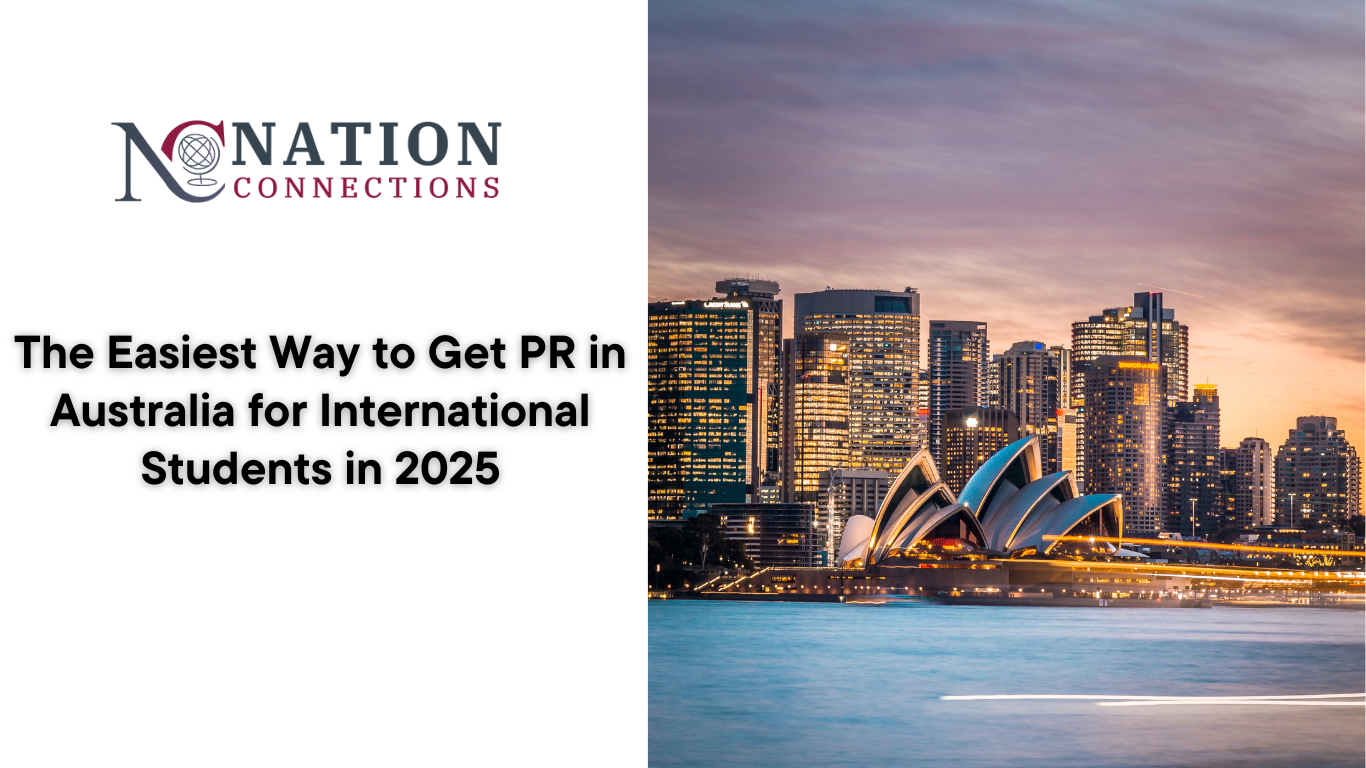Australia continues to be one of the most attractive destinations for international students. With world-class universities, a high quality of life, and a multicultural environment, it offers more than just education — it’s a pathway to long-term residence.
But how do you go from being a student to becoming a permanent resident (PR)? Let’s break down the easiest way to get PR in Australia for international students.
There’s no one-size-fits-all path, but Australia offers multiple visa pathways tailored for international students. The easiest and most popular options include:
Graduate Temporary Visa (subclass 485)
Skilled Independent Visa (subclass 189)
State Sponsored Visa (subclass 190)
Regional Visa (subclass 491)
Employer-Sponsored Visa (subclass 186 or 482)
Each has specific requirements and benefits, but let’s focus on what makes it easiest.
After completing at least two years of study in Australia, most international students become eligible for the Temporary Graduate Visa (subclass 485). This visa allows you to stay and work in Australia for 18 months to 4 years, depending on your qualifications.
Benefits:
Gain valuable work experience in Australia
Improve your points for skilled migration
Explore employer sponsorship opportunities
This is key to your PR journey. Not every course qualifies you for skilled migration.
Top PR-friendly courses include:
Nursing and Midwifery
IT and Computer Science
Engineering (Civil, Mechanical, Electrical)
Accounting and Finance
Teaching (especially Secondary Education)
These courses align with Australia’s Medium and Long-term Strategic Skills List (MLTSSL), giving you an advantage when applying for PR.
Once you gain work experience and meet the points requirement, you can apply for skilled migration visas like:
No sponsor needed
Must meet the points test (usually 65+ points)
Invitation-based system
Requires a nomination from an Australian state or territory
States often prioritize applicants who studied and worked locally
Encourages migration to regional areas
Can lead to PR through the Subclass 191 after 3 years
Points are the name of the game in Australia’s skilled migration system. Here’s how you can boost them:
| Factor | Points |
|---|---|
| Age (25-32) | 30 |
| English Proficiency (Superior IELTS/TOEFL) | 20 |
| Australian Education | 5 |
| Australian Work Experience (1-3 years) | 5-10 |
| Regional Study | 5 |
| State Nomination | 5 |
| Partner Skills | Up to 10 |
Start planning early: Choose PR-friendly courses and institutions in regional areas.
Improve your English: Aim for superior scores (IELTS 8 or equivalent).
Network: Build connections to find jobs post-graduation.
Stay updated: Immigration policies change frequently — follow news from the Department of Home Affairs.
Consult a registered migration agent: Personalized guidance can save time and prevent mistakes.
What is the fastest way to get PR in Australia as a student?
The Graduate Temporary Visa (485) followed by a Skilled Independent or State Sponsored visa is usually the quickest path.
Does studying in regional Australia help with PR?
Yes! Studying in designated regional areas can add points to your migration score and make you eligible for special visas like the 491.
Can I apply for PR while on a student visa?
Yes, but most students wait until they qualify for a post-study work visa or meet the skilled migration requirements.
Which courses are best for PR in Australia?
Courses in nursing, engineering, IT, and teaching are consistently in demand and appear on the skilled occupation lists.
How many points do I need to get PR in Australia?
The current minimum is 65 points, but higher scores improve your chances of receiving an invitation.
Is employer sponsorship an easy route to PR?
It can be if you have the right skills and an employer willing to sponsor you, especially in high-demand industries.
For international students, the journey to permanent residency in Australia is absolutely achievable with the right planning. Choose your course wisely, take advantage of post-study work opportunities, and understand the visa pathways available to you. Stay informed and proactive, and you’ll find that the easiest way to get PR in Australia for international students is also the most strategic.
Want personalized help on your PR journey? Reach out to a migration expert or explore official Australian government resources to stay ahead!




